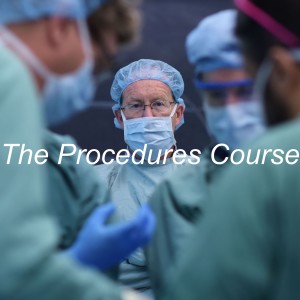Episodes

Friday Sep 09, 2022
Friday Sep 09, 2022
Hyperangulated videolaryngoscopy is an emerging skill of critical care clinicians which makes use of advanced laryngoscopes to achieve excellent visualisation of the glottis. Various devices exist to facilitate this process and this course will focus on the Storz and Glidescope hyperangulated blade videolaryngoscopes. The option to default to direct visualisation of the glottis is not usually available due to the angle of the blade and there are key difference in how the scope is manoeuvred to allow both glottic visualisation and tube delivery.

Friday Sep 09, 2022
Friday Sep 09, 2022
Resuscitative hysterotomy is the emergent delivery of a foetus from a mother in cardiac arrest to improve the outcomes of both the mother and foetus.

Friday Sep 09, 2022
Friday Sep 09, 2022
Escharotomy involves incision of inelastic burned tissue (eschar) that can impair perfusion of the extremities, as well as restrict chest wall movement and ventilation.

Friday Sep 09, 2022
Friday Sep 09, 2022
Most fatalities from blunt or penetrating cardiac injuries occur prior to hospital arrival. The main reversible pathology is acute cardiac tamponade, which may be present without external signs of injury, abnormal clinical signs, or ECG abnormalities. The cause of the tamponade is usually a laceration to a low-pressure cardiac cavity. In recent years the widespread use of ultrasound in the initial assessment of severely injured patients has facilitated the early diagnosis of cardiac tamponade and associated cardiac injuries.

Friday Sep 09, 2022
Friday Sep 09, 2022
Pleural decompression with subsequent tube thoracostomy is one of the most commonly performed life-saving procedures for traumatic chest injuries. Thoracic injuries are primarily responsible for 25% of all trauma deaths and contribute to a further 25% of deaths. However, over 85% of patients with thoracic trauma do not require thoracic surgery.

Friday Sep 09, 2022
Friday Sep 09, 2022
Temporary transvenous cardiac pacing involves insertion of a pacing wire (catheter based electrode) into the right ventricle to allow electrical stimulation of the myocardium.Transvenous pacing is usually attempted in the emergency department after less invasive treatments have been unsuccessful.

Friday Sep 09, 2022
Friday Sep 09, 2022
The anatomical properties of the subclavian vein provide a number of benefits for its use in central venous access, especially during trauma resuscitation. The subclavian vein is a large diameter central vein without valves which, as a result of its soft tissue attachments, remains patulous and undisplaced even in the hypovolaemic patient.

Friday Sep 09, 2022
Friday Sep 09, 2022
An emergency surgical airway may be a life-saving procedure in situations where other airway management techniques have failed or are contraindicated. Whilst the incidence of the can’t intubate, can’t oxygenate (CICO) scenario is low, with estimates ranging from 1/50,000 intubations in the operating theatre to 1/100 intubations in the Emergency Department, being able to gain access to the airway via the anterior neck is an essential rescue option. The technique described on this course is an open surgical technique as higher success rates are achieved when compared to needle cricothyroidotomy techniques.

Friday Sep 09, 2022
Friday Sep 09, 2022
Cranial decompression with a burr hole is the drainage of an acute extra-axial haematoma (extradural and/or subdural) in the neurologically deteriorating patient. Brain compression due to an extradural haematoma (EDH), or other expanding intracranial haematoma, may be surgically remediable but making the diagnosis can be difficult.

Friday Sep 09, 2022
Friday Sep 09, 2022
Prehospital limb amputation is an uncommonly performed procedure whereby amputation of an entrapped limb is required to facilitate the safe extrication of a patient in a life-threatening situation.


